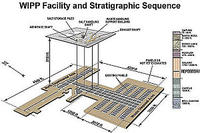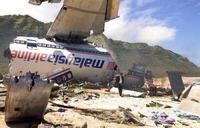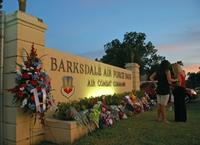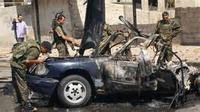-
Civilian deaths in Gaza conflict are not automatically a war crime
Civilian shielding of its facilities is a declared Hamas military tactic. The evidence of rocket pits and weapon dumps located in, around and under mosques, schools, homes and hospitals is incontrovertible. Constant broadcasts calling upon, as well as occasional physical forcing of, the populace to protect Hamas assets with their bodies are well-documented. It is sickening that Hamas chose not to build public bomb shelters in Gaza, despite using hundreds of thousands of tons of concrete on military tunnels to initiate hostilities with Israel. The tragic Palestinian death toll does not demonstrate Israeli attacks are disproportionate to legitimate military objectives. It does display a disgusting strategic decision by Hamas to exploit civilians to shield its combatants. Its civilian deaths generate selective outrage in support of its political and economic goals. This atrocity committed by Hamas against its own Gazan population is where an honest war crime investigation would begin.
-
-
Continued funding for S.C. mixed-oxide fuel (MOX) plant – at least until fall
Federal legislators have secured the funds to keep the mixed-oxide fuelplant (MOX) at the Savannah River Sitein South Carolina moving forward at least into fall, according to South Carolina governor Nikki Haley and members of the state’s congressional delegation. The 310-square mile site once produced components for nuclear weapons, but since the agreement with Russia to turn nuclear weapons into reactor fuel, the site has focused on repurposing and cleanup.
-
-
U.S. faces serious future threats in space
Gen. William Shelton, the commander of Air Force Space Command, said last week that U.S. dominance in space will be challenged by very real threats in the years ahead. The general said that those threats might consist of “jammers, lasers and tactical space nukes,” with any of these challenges exponentially more dangerous than in the past as the technology becomes more common.
-
-
Sandia makes sure U.S. nuclear weapons deterrent remain effective, credible
It may sound strange to say that nuclear weapons must survive radiation. Sandia National Laboratories says, however, that as part of its mission of ensuring the nation’s stockpile is safe, secure, and effective as a deterrent, the laboratory must make sure crucial parts can function if they are hit by radiation, especially a type called fast neutrons. Sandia developed a new way to do that after its facility for creating fast neutrons, the Sandia Pulsed Reactor (SPR), was shut down due to increased post-9/11 security concerns about its highly enriched uranium.
-
-
DOE chief to visit WIPP to discuss funding for recovery efforts

Energy Secretary Ernest Moniz will visit Carlsbad, New Mexico on 12 August to discuss funding for the Waste Isolation Pilot Plant (WIPP) recovery efforts.Traces of americium and plutonium were released from a nuclear waste drum on 14 February and were detected in the air almost a half-mile outside WIPP. On 15 May, the DOE confirmed that the damage occurred on a waste drum from Los Alamos National Laboratory.
-
-
Plans for nationwide 911 dispatch centers advance
Municipalities across the country are planning to connect 911 dispatch centers in an effort to improve information sharing. Plan is to connect dispatchers via the Internet, which will allow centers quickly to transfer calls, 911 text messages, photos, videos of accident scenes, and other information. The technology is part of a “Next Generation 911” initiative already being implemented across the country.
-
-
Forensic technology could help U.S. prove case against Russia, Ukrainian separatists

Over the weekend, U.S. Secretary of State John Kerry appeared on several media outlets to make a case against Russia for the country’s support of pro-Russian separatists responsible for the downing of Malaysia Airlines Flight MH17. The United States is confident that rebels attacked the airplane with an SA-11 Gadfly 9K37M1 Buk-1M fired missile. For the United States to prove its allegations against Russia and the Ukrainian separatists, Western authorities must first gain full access to the crash site, utilize an arsenal of forensic investigative technology, then gather eye witness accounts. Once the United States can prove its allegations, European partners can then be persuaded to impose tougher sanctions on Russia.
-
-
Fire shuts down nuclear repository, but DOE still recognizes operator for “excellent” performance
Five days after an underground truck fire closed the Waste Isolation Pilot Plant (WIPP), the Energy Department (DOE) awarded Nuclear Waste Partnership (NWP), the operating contractor of the nuclear repository, $1.9 million for “excellent” performance during the past year.Shortly after the truck fire, WIPP was shut down because of radiation leak, Still, “No federal or contractor official has lost their job, been transferred, been moved off the WIPP contract or otherwise held accountable. No leadership has changed at the federal level. No company has lost a contract,” noted an industry observer.
-
-
Barksdale AFB to be upgraded so it could store nuclear weapons on site

In 2009, the Louisiana congressional delegation successfully fought for locating the Global Strike Command at Barksdale Air Force base. Barksdale, home to the Global Strike Command, is No. 2 on the Air Force’s priority list of nuclear weapons storage areas set to receive an upgrade so Barksdale can safety store the U.S. nuclear weapons and load the weapons onto B-52s. The B-52s stationed at Barksdale AFB currently fly to other installations to load nuclear weapons onboard. Language inserted last week into the bill that funds the Department of Defense (DOD) for FY15 requires the Air Force to develop a detailed plan within ninety days of the bill becoming law on how it will modernize the U.S. five nuclear weapons storage areas, including the one at Barksdale Air Force Base.
-
-
First federal funds for West Coast earthquake warning system
Efforts by California officials to expand an earthquake warning system for the West Coast gained ground last Tuesday as the House Appropriations Committeerecommended $5 million — the first federal funds specifically for the project — toward the warning system. Analysts project the system will cost $38.3 million to build, and $16.1 million a year to operate and maintain. The $5 million would allow the purchase and installation of additional sensors and hiring of staff.
-
-
FBI: driverless cars could be used as bombs-on-wheels

Whether or not a driverless car, from Google or any other company, ever makes it to market, the FBI thinks it may be a “game changing” vehicle which could dramatically change high-speed car chases so that the pursued vehicle would have an advantage over the pursuing car. An agency report also warned that such cars may be used as “lethal weapons.”
-
-
DHS urged to investigate use of DHS grants for Motorola emergency comm. devices
Three senior House Democrats have requested DHS’s Office of Inspector Generalto investigate allegations claiming Motorola’s contracting tactics have led state and local governments unnecessarily to spend millions of dollars on the company’s proprietary devices, including its two-way emergency radio systems.
-
-
A drone finds natural disaster survivors through their cell-phones
During his semester project in Computer Science at the École polytechnique fédérale de Lausanne (EPFL), Jonathan Cheseaux developed a system for locating a person via his or her mobile phone with a drone. This device could be used to find victims in natural disasters.
-
-
Tennessee man pleads guilty to attempting to extort a nuclear contractor
Adam Winters, 26, of Robbins, Tennessee, has pleaded guilty in a $2.5 million extortion case involving Babcock and Wilcox, a managing contractor at the Y-12 National Security Complex in Oak Ridge. According to Oak Ridge Today, Winters sent the contractors an e-mail on 8 May, threatening to injure their reputation by publishing roughly 1,200 slides containing evidence from nuclear testing, including the amount of radiation used on animals.
-
-
Training volcano scientists from around the world to predict, respond to eruptions

Scientists and technicians who work at volcano observatories in eleven countries visited the U.S. Geological Survey’s Hawaiian Volcano Observatory earlier this month to learn techniques for monitoring active volcanoes. The International Training Program in Volcano Hazards Monitoring is designed to assist scientists from other nations in attaining self-sufficiency in monitoring volcanoes and reducing the risks from eruptions.
-